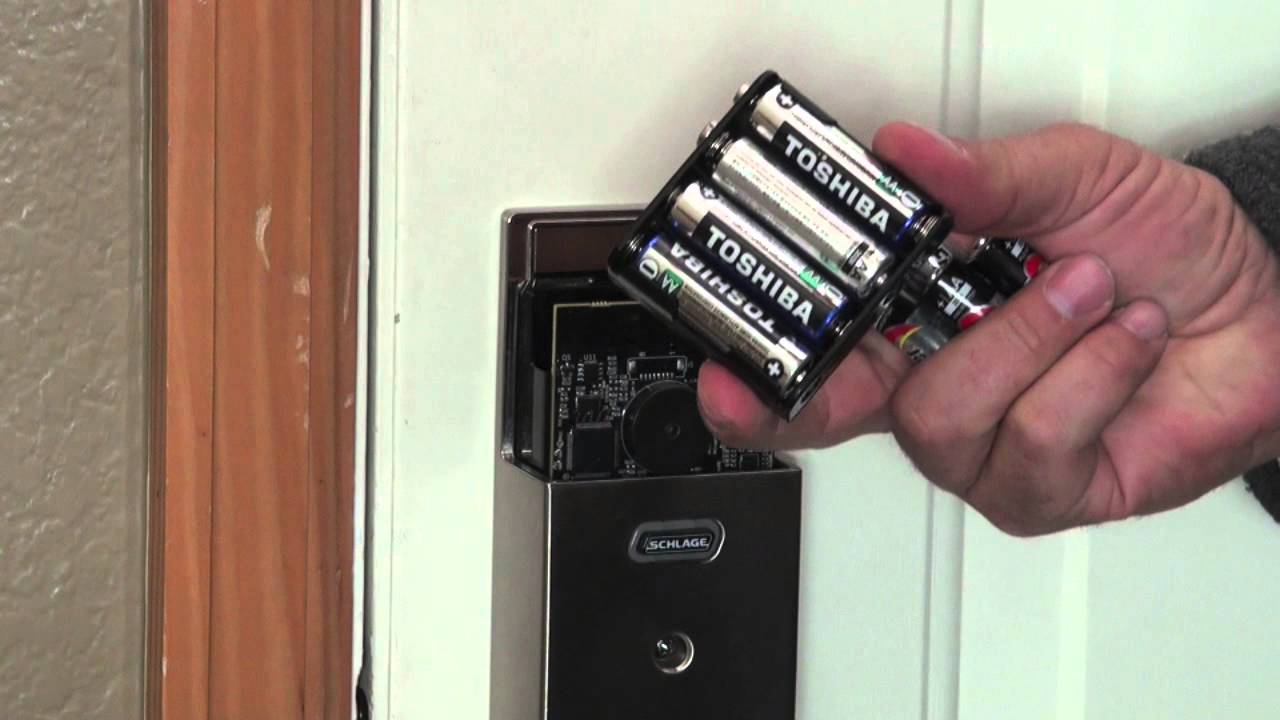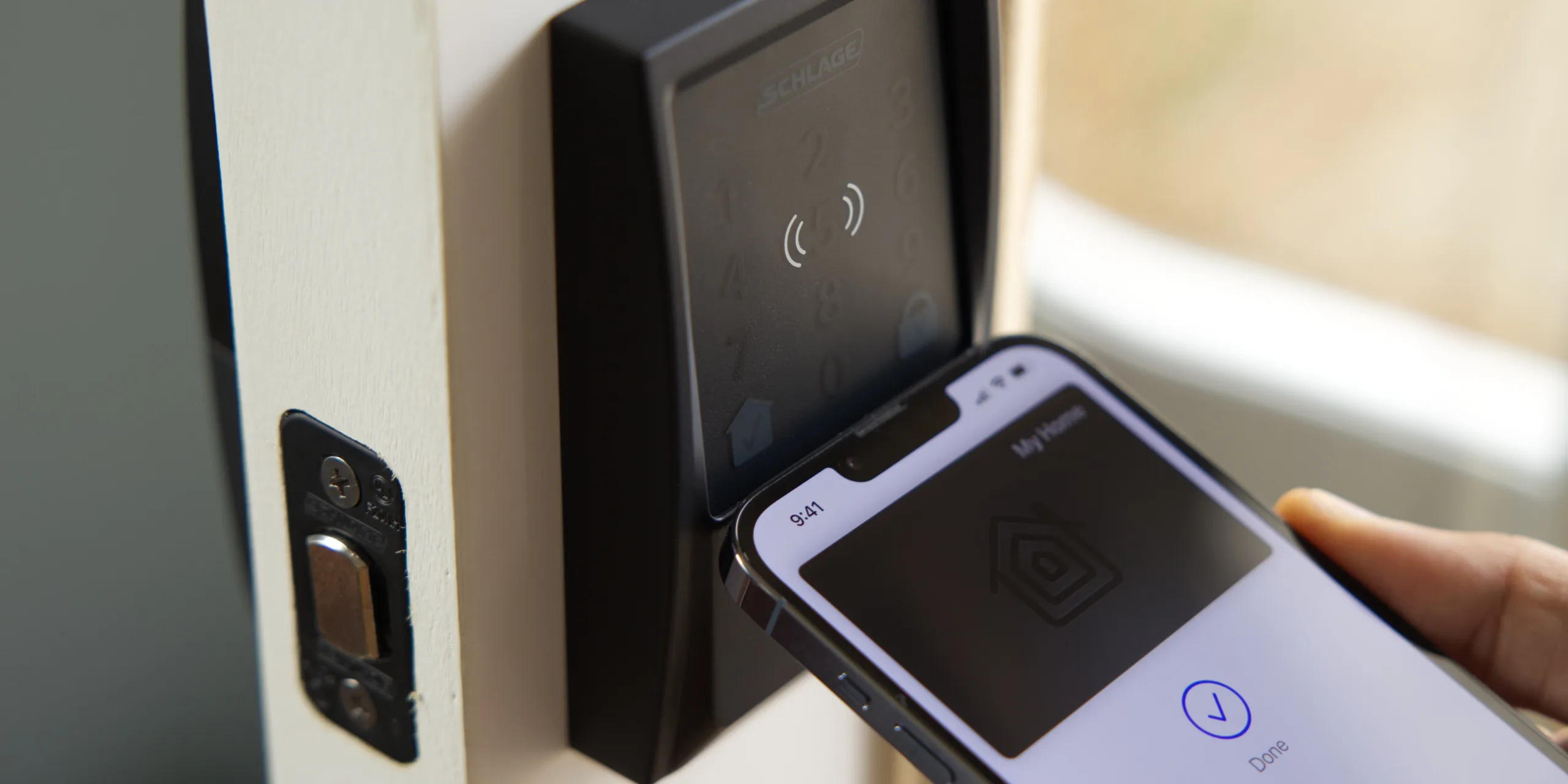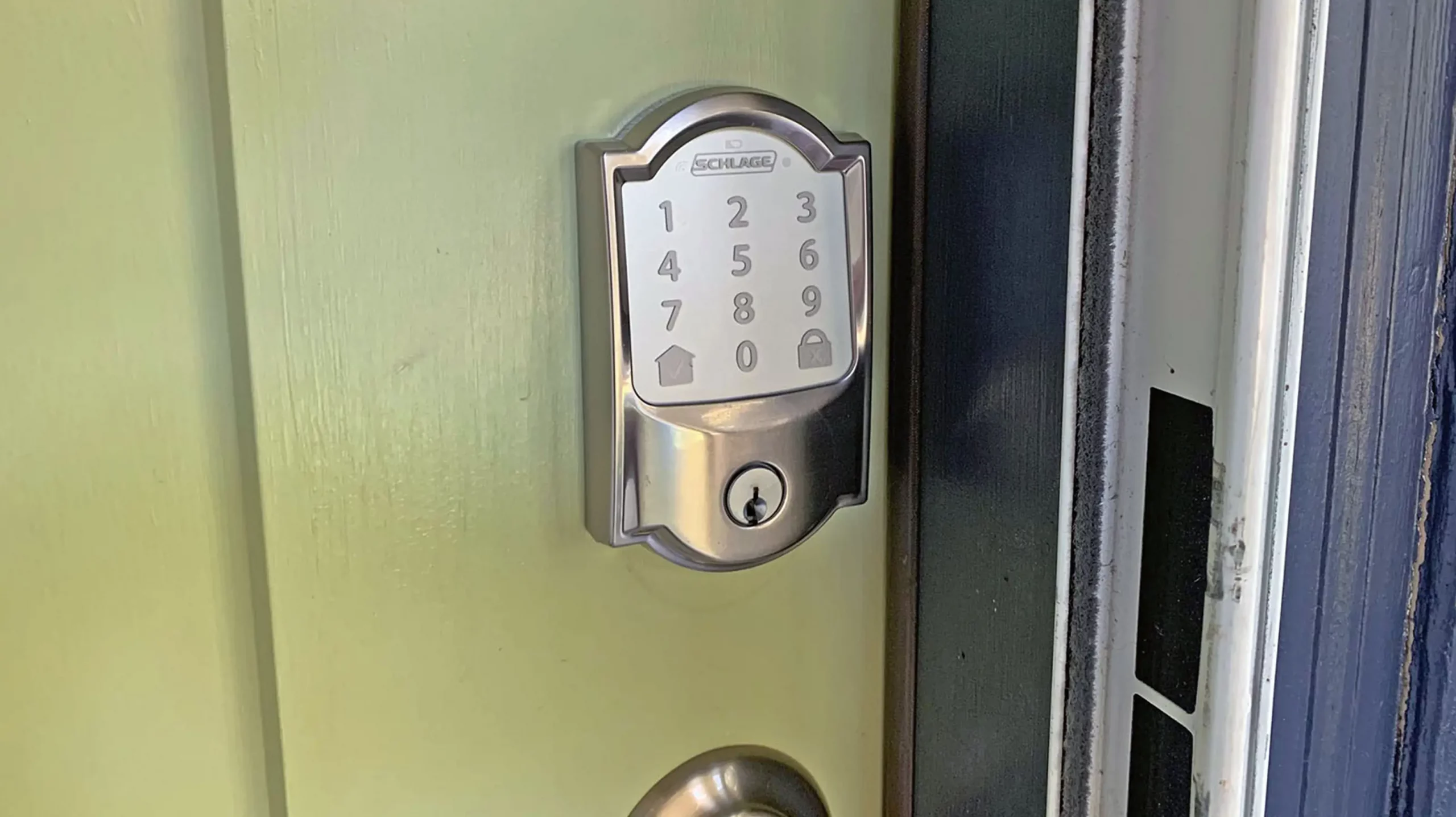A battery is the power source of any mechanism powered by electricity. Without it, the device won’t be able to work or will give you problems during smart lock usage: it can stop responding or start acting strangely.
Because of this, it’s very important to know how long is your battery going to last, and its battery life length, until you have to change it. That is crucial if you want to use your device without any unexpected issues. Low energy can lead to the smart lock not responding.
Schlage Encode model of a smart lock is purchased along with both a digital keypad and a traditional metal key. The device takes energy from AA batteries (and there are four of them), and they are placed at the back of the mechanism.
The article discusses a battery life length for smart locks, effective problem solutions, paths to prolong it, the consequences of smart lock energy running out as well as when and how to renew it. Ant smart locks information such as this will boost your experience!
How long until the batteries run off?
The length of battery life is considered to be dependent on many things.
One of the most important is the climate. If it’s usually warm where you live, the power runs out slower as opposed to when it’s in a cold environment.
Another thing to consider is the type of batteries the existing smart lock is equipped with. Alkaline ones die later than lithium batteries, they are considered to be better. Schlage company’s smart locks almost always require alkaline batteries.
How often do you use the smart lock? The battery life becomes much shorter when you use smart locks very frequently.
If you live in a cold environment and use the security system every day, replace the batteries twice a year. If the residence is built in a hot country and you don’t use the device a lot, there might pass a year or even more between two battery replacements. Purchasing smart locks in a cold climate has its risks, unfortunately.
So the answer to the question depends on all the factors listed above.
What about Schlage-made smart locks?
While we know that Schlage devices use a specific type of energy cell, the battery life depends on climate and usage frequency nonetheless. I recommend thinking about those factors while you pick smart locks to purchase and install.
The average battery life of AA type is 1 500 hours, which is almost 63 full days. Higher quality AA cells’ battery life can reach 2 000 hours, but the worse batteries barely work for 1 200 hours.
With normal usage frequency, the batteries can last for a couple of months or even a year with some conditions met. Namely, if the power cells’ quality is great and you live in a warm, comfortable electronic devices climate.
Schlage lock battery dies – are there consequences?
After the battery life of the existing smart lock has completely ended, you should immediately replace it either by yourself or by calling a locksmith. Some models might even require that call.
When the smart lock battery dies, there’s a chance to get permanent damage. Therefore it’s highly unrecommended to wait until the energy completely runs out. Replacing the battery pack regularly is very important for a good user experience.
Another issue is that whether your smart lock is installed on your front door or at the car when it doesn’t have any more battery power left, you won’t be able to use it. Therefore security is compromised. There’s even a risk of being locked out of your property with the only way to access it is to use a physical key.
How do I know when it’s time to do the replacement?
Considering there are too many factors in play, you can’t calculate the exact moment when it’s required to change the current battery pack. Even if a manufacturer sometimes provides information about average battery life, it’s usually different for many users.
An unpreferable, yet sure way to know it is if you’ve suddenly encountered a malfunction in your lock. If the device doesn’t work as intended for no particular reason, its energy probably ran out. Any troubleshooting plan has a “recharge the batteries” step.
A more proper strategy is to pay attention to the power level indicator. Although other signals also give some information regarding the energy level.
Why is there a red X?
Showing a red X sign, the Schlage Connect touchscreen deadbolt notifies about the battery life coming to an end. If you see it, you should replace the energy cells as soon as possible.
A red light on the smart lock
It’s a common mistake to think it’s a sign of low energy. Usually, the indicator emits a repeated red signal after you’ve entered the wrong user code. Only if the blinking is prolonged it’s related to the battery life.
An orange light on the smart lock
That’s not something telling about the battery’s energy level. An orange blink means that the device is processing its programming sequence.
Changing the batteries step-by-step
Sometimes there’s a complex battery-changing process requiring a locksmith’s help. That’s very inconvenient: no battery life is long enough to replace it irregularly.
Fortunately, that’s not the case for most smart locks. Usually, the process can be easily performed by the user themselves. Although it’s better to do the research and carefully follow the instruction.
To help you, I’ve made this smart lock battery replacement plan:
- Take the cover plate off the interior side of the device.
- Inside, you will find two energy cells. Put both of them away.
- Place the new ones inside. Pay attention to their orientation – it must be correct.
- Screw the cover plate back in its original place.
- Try to lock and unlock the door to ensure that it works.
- Don’t forget to dispose of the old battery pack properly!
This process takes just a couple of minutes, especially after you get used to it. Working with the insides of smart locks can be hard, but not as hard as it might seem.
Can I prolong the battery life?
It’s frustrating enough having batteries die, but frustration becomes much bigger when the battery life is extremely narrow and the energy runs out too often. It can be caused either by device fault, in which case you should contact Schlage itself, or by the habits you have regarding how you operate the lock.
To enhance energy performance, you can do a couple of things.
First of all, check if the installation of the smart lock itself has been performed correctly. If something went wrong and the lock hasn’t been installed as intended, the main motor could be forced to work harder, therefore spending more energy than it should and lowering the battery life potential.
To do the troubleshooting, check how the wing latches are seated and ensure that the right adaptor has been installed. If you’ve found any problem, reinstall the smart lock completely.
The next thing to think about is to reduce the amount of friction applied by the deadbolt and the strike plate of the door frame. There should be nothing opposing the deadbolt from moving smoothly. Any resistance drastically increases the amount of energy required for the motor to work, therefore draining your batteries much faster.
Surprising as it is, too much friction between the door, the deadbolt, and the plate is the biggest reason for the battery life being too short.
If nothing else helps, reconsider your usage habits. How many features have you enabled and which of them are actually useful and don’t just drain the power? Try turning the odd ones off and see how it goes.
Also, you should check what type of Wi-Fi router you have. Perhaps there are less energy-consuming routers that work with smart locks out there and they’ll suit you better.
Why do some devices drain energy quicker?
Unfortunately, there are smart locks that require more energy than their rivals.
Is there a reason, though? Different smart locks use different communication protocols. Their energy consumption levels aren’t the same.
For example, a model that needs a Wi-Fi network to connect requires more battery power. On the other hand, Zigbee consumes a much lower amount of energy because smart hubs themselves are used for the connection; its batteries live for a slightly bigger time.
What battery do Schlage products use?
Commonly Schlage locks use AA batteries, in the exact number of four. Although this manufacturer gives an alternative: smart door locks requiring a set of AAA energy cells.
The information about the correct battery type can always be found in the user manual or on the Schlage internet page.
Are lithium batteries as great as I heard?
Schlage recommends a specific battery type for a reason. Usually, non-rechargeable alkaline ones.
If lithium batteries are nice on their own, they lead to worse performance if you use them with Schlage products because they are designed to work with alkaline.
Schlage and August smart lock pro warn against using lithium batteries and express concern over their rising popularity. They drain quicker the less power they have in them. The battery pack in these conditions dies so fast you might not be quick enough to perform the replacement in time.
Reliable manufacturing corporations prefer alkaline batteries to put inside their mechanisms. It’s not a marketing issue, but a technical requirement to do so with the quality of smart locks themselves in mind. Lithium batteries tend to be less durable than AA batteries.
What about rechargeable batteries?
Despite Schlage usually preferring non-rechargeable power cells, it’s not a bad idea to install rechargeable ones as long as they are alkaline. Just make sure you’ve chosen the right type and size of energy cells.
No matter what model you have: Schlage, Kwikset, or August smart lock pro, recharging batteries instead of replacing them is convenient, and, most importantly, it doesn’t damage the smart lock performance.
How to open the door when the batteries are dead?
It’s very inconvenient and even dangerous to let yourself be locked out of the house. If the battery life is short, this problem eventually becomes real.
Fortunately, there are ways to open the entrance even with no energy left for the smart lock to operate:
- Using a keypad. If you have any of the Schlage keypad locks, you can try to put the code in. Usually, keypads have spare batteries, therefore they might still be functioning.
- Using a lever. This option allows you to manually unlock the door by moving the lever. Try to insert a flat screwdriver in the lever hole and turn the head counterclockwise.
- Removing the knob. Attempt to take away the knob, if there is one, by unscrewing it from its place. Depending on the model, this step might be required to mechanically move the lever as in the previous option.
- Call a locksmith. If nothing helps or you’re not sure you can open the lock without breaking it, it’s always an option to call a professional for help.
My smartphone battery dies too fast
Using a smart lock possibly creates an unexpected problem: not the batteries inside a smart lock run out of energy, but instead, your phone energy drains pretty fast. This can happen both with Schlage door locks or any other, for example, an August smart lock pro.
It’s even more inconvenient compared to experiencing your smart lock battery dying. A smartphone might run out of power in the middle of something important, leading to a lot of frustration.
Why does that happen? Most modern smart locks are tied to a smartphone via an app. There is an opinion that this feature allows you to conveniently operate the device from any distance, but on the other, it drastically increases the energy consumption of your smartphone.
Gladly, there are a couple of things to do if you want to fix this problem at least partly.
First of all, you can get rid of the current smart lock and get the model without any remote control.
But if you need that feature, you can improve the battery life of the phone by reducing the number of other apps. They can also drain energy.
The last thing to do is to replace the common batteries with an external pack or a bigger cell case. This way the smartphone has overall more energy, therefore you’ll get long battery life.
Conclusion
Smart locks are a great addition to your home security system, especially if you’re used to smart hubs.
But your user experience with smart locks might be ruined if you encounter problems with your power cells. To avoid it you should know when you should remove them and get some new ones or even rethink your habits and product choices.
It’s also better to choose the model that has the highest energy efficiency. The best experience can be achieved by purchasing the smart lock specifically providing wide high durability for a reasonable price – or at least having them in good balance.
The length of battery life is hard to determine because it depends on many different factors: temperature and climate, usage habits, and the type of energy cells installed.
To conclude: on average, a single cell pack can provide enough power for a period lasting from half a year to a single year before they have to be replaced.




